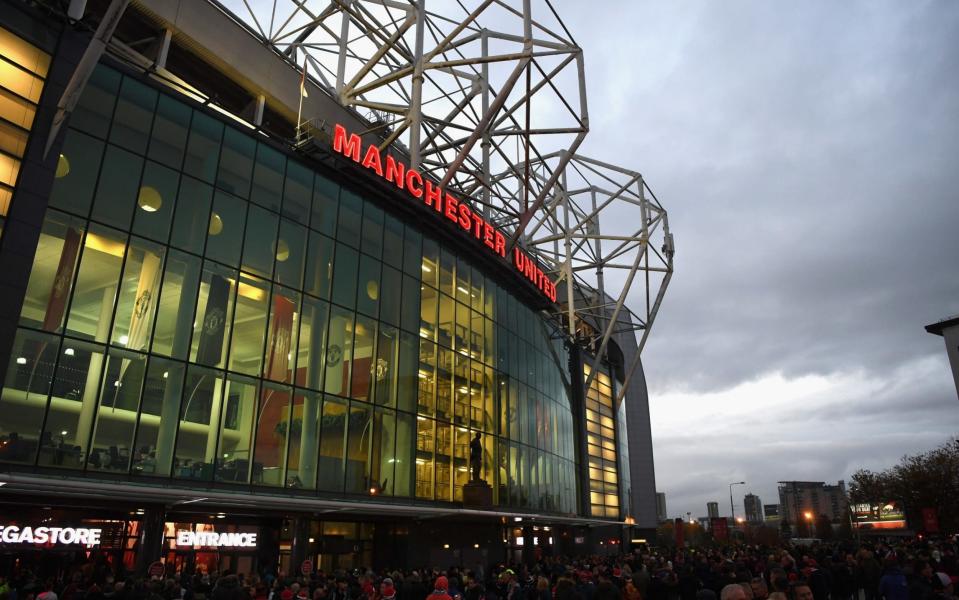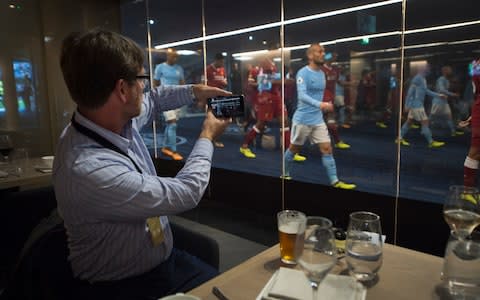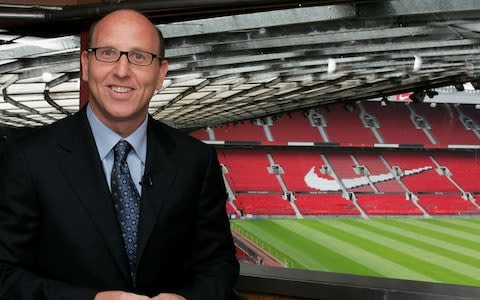Once the country's best stadium, tired Old Trafford is now showing its age

On Sunday the eyes of the world will be focussed on Manchester. As the cross-town rivals go head to head at the top of the Premier League, in a match that will have a huge bearing on the direction of the title, updates from the match will spin round the globe. Or at least they would if the WiFi in the Old Trafford press box actually worked.
Everywhere reporters go in the Premier League these days, at the Emirates and the Etihad, at Anfield and the Amex, the WiFi works like a dream. Except at the Theatre of Dreams. There it drifts in and out, stops unexpectedly, disappears entirely from view, making the delivery of reports - so straight-forward elsewhere - a source of constant frustration. And it has been like that for the past five years at least.
This may seem the most niche of complaints. Really, what does it matter that a few journalists are inconvenienced when the product on the pitch is as compelling as this? Except the shabby state of communications at the country’s largest club venue is indicative of a wider issue: this is a sporting institution in urgent need of investment. Frankly, it would not take much in the way of cash to sort out the problem. But at United for the past decade, when it comes to funding improvements, there has been an institutionalised reluctance for hands to go anywhere near pockets.
And that is a story that can be seen all round the stadium. When the Manchester City fans file into their rivals’ home on Sunday it will be a familiar trip. While the Etihad is a place subject to almost constant upgrade and redevelopment, Old Trafford has not changed at all in more than 10 years. Nothing has been added, nothing rebuilt, nothing improved. The capacity has not been increased, the facilities have not been overhauled, even the pies remain as inedible as they have long been.
Once Old Trafford was the leader of stadium development, the shining light of modernism. After the Taylor Report demanded football be dragged kicking and screaming into the modern world, the Manchester United board quicker than anyone else appreciated the commercial returns that could come from developing their infrastructure. Blessed with the room to expand, they built upwards and outwards. It wasn’t cheap, but soon they had the grandest stadium in the country, capable of accommodating more of the club’s vast supporter base than ever before. By the time the quadrants were extended in 2005 to take the capacity up to over 75,000, United were so far ahead they could entertain 30,000 more paying customers than any of their main rivals.

In the past decade, however, as Old Trafford has remained pickled in aspic, so the rest have been playing catch up. Arsenal have moved into the Emirates, Spurs will move into the state-of-the-art new White Hart Lane next season, Chelsea have plans for a super stadium at Stamford Bridge. Meanwhile, Liverpool and Manchester City have hugely increased their capacity with grand new stands, West Ham can now play to 20,000 more people since they purloined the London Stadium, even Crystal Palace are in the process of a sizeable expansion. Everywhere corporate revenues are increasing from adventurous new facilities like City’s Tunnel Club. Meanwhile, United’s premium offer remains as it has for the past 10 years: steak, chips and a pre-match live appearance by Clayton Blackmore.

The lack of investment is indicative. At Old Trafford, under the Glazer ownership, everything is focussed on the present not the future. All initiatives are concentrated on upping the revenues from global corporate partnerships in order to pare down the debt. These are not owners interested in investing. After all, they have not put a penny of their own money into the club, preferring to use others’ cash to pay off the cost of buying the place. Blessed with taking on a property that was then the market leader, they have sat back and done nothing to keep it ahead of the game.

Everywhere you look at United it is the same. Once the training ground was the best around. Now it has been overtaken by those at Arsenal, Spurs and Everton, never mind the magnificent facility that has bloomed across town at the Etihad. Likewise, the Academy that once produced the Class of '92 is now lingering in the shadow of City and Chelsea. While the rest of the game has invested to improve, at United the roof has remained unrepaired as the sun has shone.
There are those working within the club who are more than aware of the need to upgrade in order to recover the lost distance from the pack. Recently there has been talk of looking into expansion of the Sir Bobby Charlton stand, to take capacity up to 88,000. The trouble is, with a railway line running behind, this would be a hugely complicated, expensive project. And with owners who have proven reluctant ever to do anything other than extract money from the coffers, the cost of funding it has thus far kept the idea on the drawing board. One day, of couse, there might be news of development on that front. Though possibly not if we are dependent on the Old Trafford WiFi system to deliver it.

